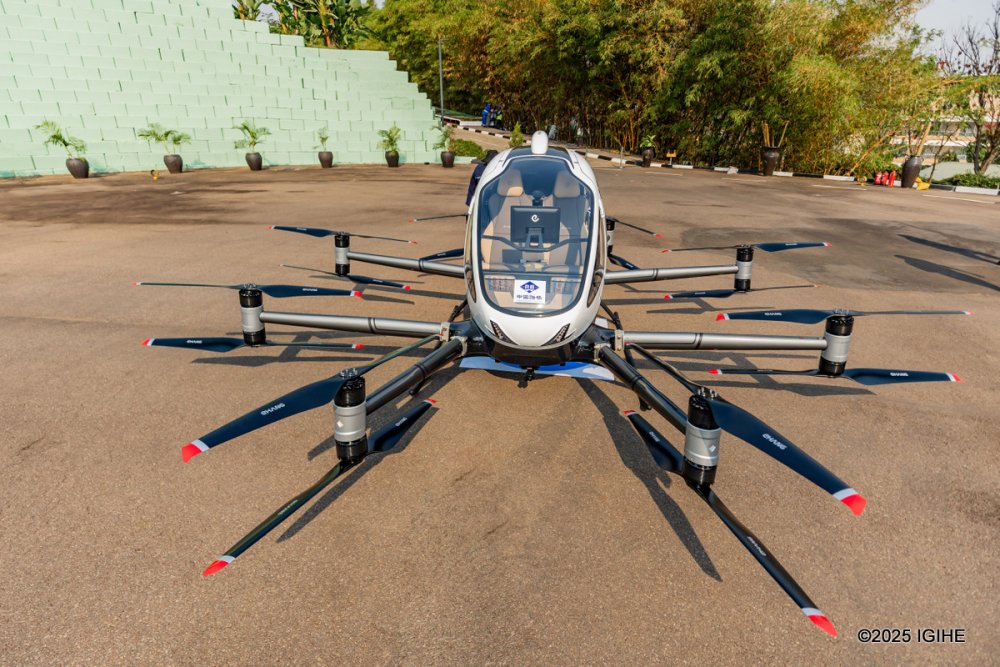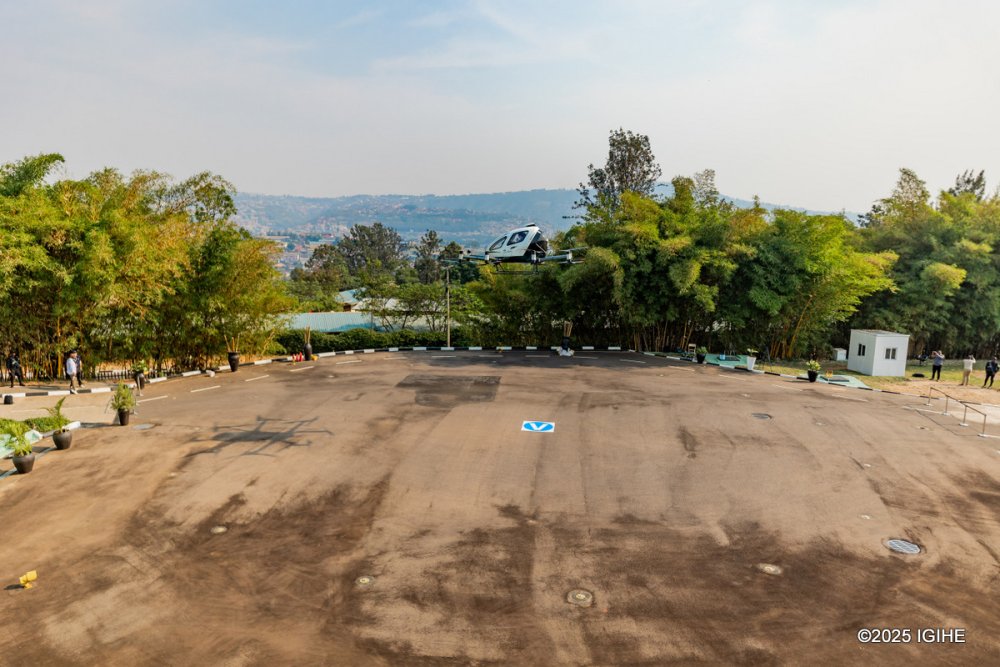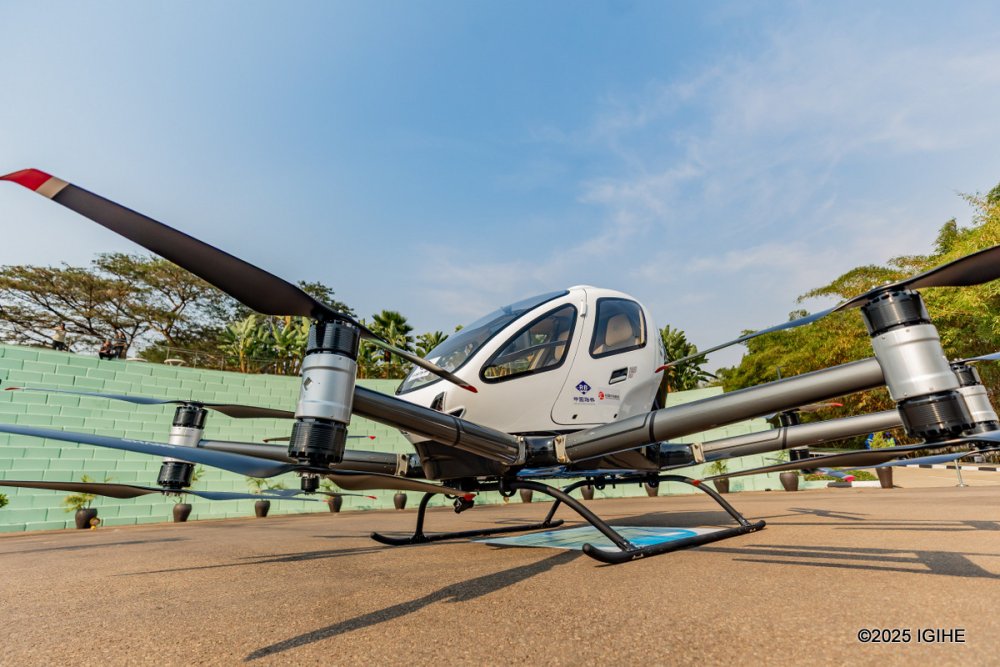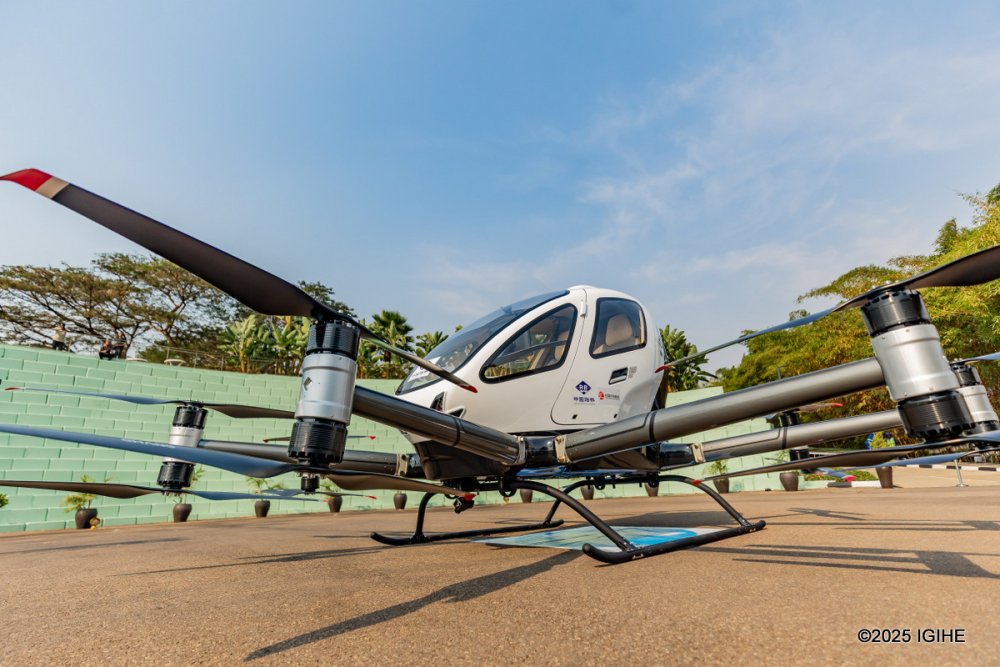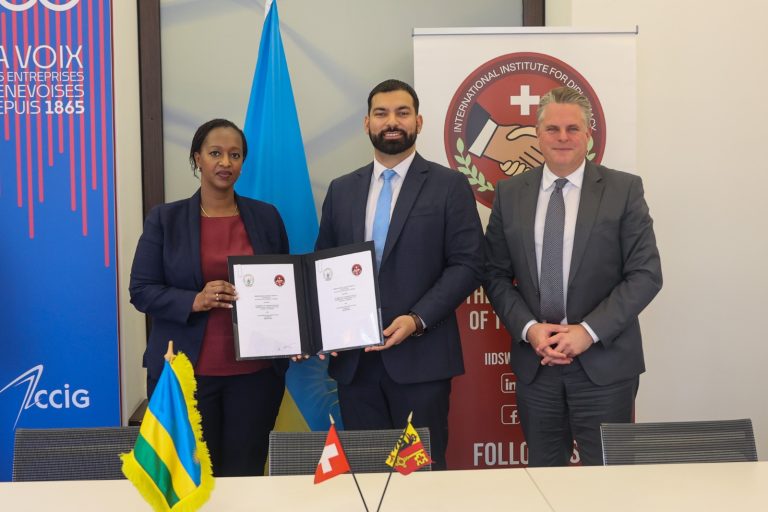Rwanda has unveiled passenger drones, becoming the first country in Africa to introduce this groundbreaking innovation.
The launch took place on September 3, 2025, just hours before the official opening of the Aviation Africa 2025 conference, which focuses on advancing air transport. This two-day event, held for the ninth time, will run until September 5, 2025, bringing together more than 80 aviation companies operating across Africa.
The new aircraft, known as eVTOLs (electric Vertical Take-Off and Landing), were manufactured by the Chinese company EHang. They are 100% electric, with one model designed to carry two passengers and another capable of transporting over 620 kilograms of cargo. The drones can fly a distance of 30 kilometers, remain airborne for 25 minutes per charge, reach an altitude of 100 meters, and are equipped with 12 propellers mounted on four landing arms. Advanced technology enables them to detect and avoid obstacles in the air.
The maiden passenger flight was taken by Melissa Rusanganwa, Head of International Cooperation at the Rwanda Civil Aviation Authority (RCAA).
“I felt completely safe and comfortable,” she said. “Before the flight, checks were carried out to ensure the aircraft was ready, and we were briefed on safety instructions. This new technology will transform air mobility by connecting people across different locations.”
Rusanganwa also emphasized the potential of these drones to boost Rwanda’s tourism sector, offering visitors a new way to explore the country while promoting eco-friendly transport since the drones run entirely on electricity.
“You know Rwanda started with drones delivering medical supplies, especially blood and medicine. This is another step forward—supporting tourism while helping us meet our goal of reducing carbon emissions,” she added.
Each drone costs around $400,000. Rwanda is now the 21st country to adopt EHang’s passenger drones, with the company having sold 216 units globally in 2024.
Previously, drones in Rwanda were primarily used for medical deliveries. Since October 2016, Zipline Rwanda has pioneered this service globally, delivering blood, vaccines, and medicines to health facilities nationwide. Its drones, which carry 2–3 kilograms per flight, can travel up to 160 kilometers at a speed of 130 km/h. By November 2024, Zipline had reached 654 health facilities, including over 100 small clinics.
Currently, Zipline operates over 500 routes, with its longest delivery taking just under 40 minutes from Muhanga to Mibilizi District Hospital in Rusizi.
Looking ahead, Rwanda is developing an ambitious project to strengthen drone technology further. The country is constructing an international-standard Drone Operation Centre in Huye District, Southern Province, on the site of a former airfield.
This Rwf 13.4 billion facility will be able to host up to 3,000 drones simultaneously, including large ones comparable in size to helicopters with wingspans of 18 to 20 meters. The center will feature assembly facilities and dedicated areas for drone testing and maintenance, positioning Rwanda as a continental hub for drone innovation.
Author: Justinmind HARERIMANA
